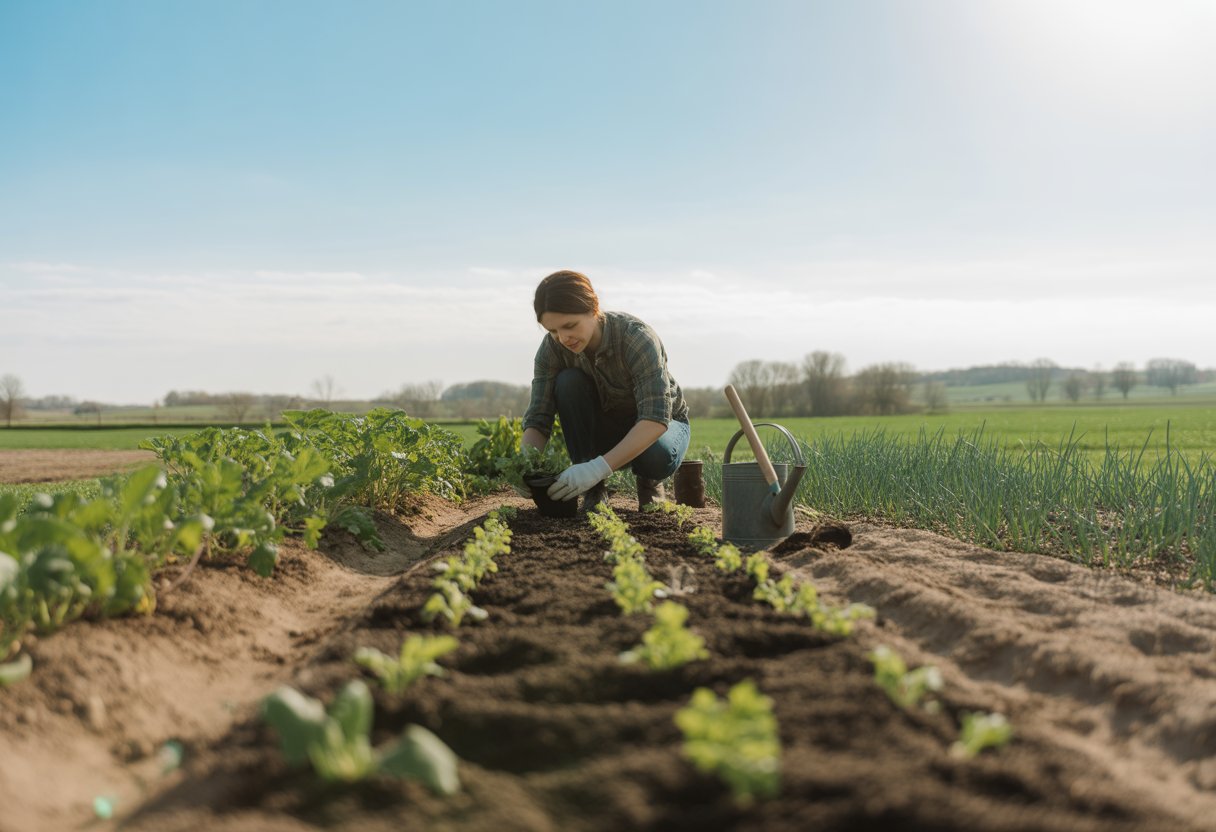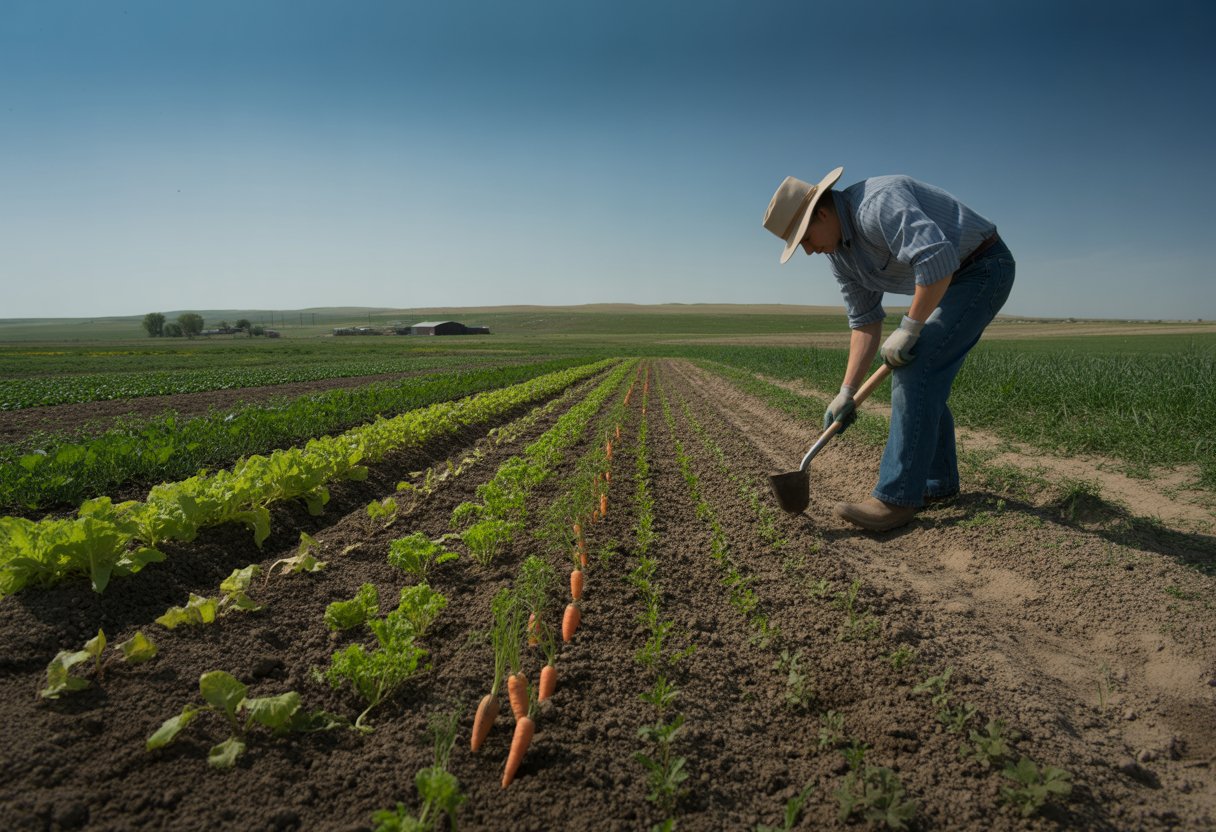Vegetable Planting Guide North Dakota Essential Tips for Successful Growing Seasons
Gardening in North Dakota can be a real adventure, thanks to the short growing season and unpredictable weather. If you want your vegetables to thrive, you’ve got to pay close attention to planting times and pick crops that can handle the local conditions.
A good vegetable planting guide for North Dakota gives you the best windows for sowing seeds and transplanting seedlings, so you can make the most of the state’s limited frost-free days.

These guides usually cover soil preparation, recommended vegetable varieties, and timing based on local frost dates. When you follow these pointers, you really boost your chances of a solid harvest, even with North Dakota’s tricky climate.
Understanding North Dakota’s Growing Conditions
Vegetable gardening here means dealing with a short growing season, shifting frost dates, and some stubborn soils. If you know the local climate quirks, frost patterns, and how to prep your soil, you’re off to a good start—whether you’re near Grand Forks, Minot, or somewhere in between.
Climate and Hardiness Zones
Most of the state sits in USDA hardiness zones 3b to 4b. In zone 3b, winter lows can hit -35°F, while 4b bottoms out at -25°F.
Those cold winters limit what you can plant. Summers get warm—usually 70°F to 80°F—so you can try some warm-season crops, but you’ll need to focus on frost-tolerant or quick-maturing varieties.
If you’re gardening in Grand Forks, you might get a few more frost-free days than folks in Minot. That little difference can change your planting schedule quite a bit.
Frost Dates and Growing Season
Most years, the last spring frost hits between May 10 and May 25, depending on where you live. Grand Forks tends to see frost a bit later than the southern part of the state.
First fall frost usually shows up between September 20 and October 5. So, you get about 100 to 120 days to grow your veggies.
If you plan around these dates, you can avoid losing crops to surprise cold snaps. A planting calendar that matches your local frost dates is pretty much a must.
Soil Preparation and Fertility
North Dakota’s soil is mostly loam or clay loam, and it takes some work to get it ready for vegetables. Checking the pH helps—a range of 6.0 to 7.5 works for most crops once you tweak it as needed.
Adding organic matter like compost makes your soil fluffier and better at holding water and nutrients. Fast-growing veggies love a boost of nitrogen, so mix in some fertilizer.
Till the soil in spring to loosen things up and get rid of debris, but don’t overdo it—too much tilling leads to erosion and compaction. Regular soil tests tell you what nutrients you’re missing.
If you’re gardening in Minot or Grand Forks, you might have to adjust your soil prep depending on what’s in your backyard.
Planning Your Vegetable Garden
A thriving garden in North Dakota depends on picking the right vegetables, making smart use of space, pairing plants well, and sticking to a planting schedule that fits the climate.
Selecting the Best Vegetables for North Dakota
It’s smart to focus on cool-season and warm-season crops that can handle the short summer. Lettuce, spinach, peas, radishes, and carrots are great for early spring.
When the weather finally warms up, plant tomatoes, peppers, corn, beans, cucumbers, zucchini, summer squash, pumpkins, and melons after the last frost. Root crops like beets, potatoes, and kohlrabi do well here, too.
Hardy brassicas—think broccoli, Brussels sprouts, and asparagus—work for long-term beds. If you pick varieties bred for northern climates or quick maturity, you’ll have a much better shot at harvesting before the first frost.
Designing Garden Layout and Spacing
A good layout makes a big difference. Set up your rows so they follow the sun, with tall crops like corn and tomatoes on the north side so they don’t shade out shorter plants.
Give peas, lettuce, and radishes about 2-4 inches of space, but let pumpkins, squash, and melons spread out—24-36 inches works well. Asparagus and Brussels sprouts like extra room for air flow.
If your soil isn’t great or you’re short on space, try raised beds or container gardening. Leave enough space between rows so you can water and harvest without trampling everything.
Companion Planting Strategies
Pairing the right plants can really help. Beans add nitrogen to the soil, which tomatoes and peppers love.
Corn, beans, and squash—the classic “Three Sisters”—support each other and grow well together. Cucumbers and melons often do better when you plant them with radishes or lettuce, which can help keep pests away.
Keep potatoes away from tomatoes and peppers to avoid spreading disease. Broccoli and other brassicas like having onions or garlic nearby to ward off bugs.
A mix of plants keeps pests guessing and helps your soil stay healthy.
Planting Schedules and Crop Rotation
Timing is everything—especially in North Dakota. Sow peas, lettuce, radishes, and spinach outdoors 2-4 weeks before the last frost.
Wait until the soil hits 60°F before planting tomatoes, peppers, corn, beans, or cucumbers. Rotate your crops each year—move plant families to new spots to keep soil healthy and pests at bay.
For example, after you harvest carrots or beets, plant leafy greens or legumes in that spot next year. Don’t grow Brussels sprouts or broccoli in the same place back-to-back.
Planting and Caring for Specific Crops

You really have to watch the clock with North Dakota’s short growing season and unpredictable weather. Picking the right crops and prepping your soil makes a big difference.
Root and Leafy Vegetables
Root veggies like carrots, beets, radishes, and potatoes love loose, well-drained soil. Plant carrots and radishes early in the spring—they can handle chilly weather.
Beets want steady moisture and moderate heat. Potatoes need you to mound soil around their stems as they grow, which protects the tubers.
Leafy greens—lettuce, spinach, and chard—prefer cool weather and partial shade during hot spells. Water them regularly to prevent bolting.
Harvest often to keep them producing. A soil pH between 6.0 and 6.8 usually works well for greens.
Warm-Season Crops
Tomatoes, peppers, squash, zucchini, cucumbers, pumpkins, eggplant, melons, corn, and beans all want full sun and soil warmer than 60°F. Start tomatoes and peppers indoors about 6-8 weeks before you plan to move them outside.
Squash, zucchini, cucumbers, and pumpkins need regular watering—otherwise, you’ll get diseases like powdery mildew. Beans and corn like soil with extra nitrogen.
Wait until after the last frost to plant beans, or they’ll just sulk. Rotating these crops every year helps keep pests from getting out of hand.
Herbs for North Dakota Gardens
Herbs can do surprisingly well here if you give them the right care. Basil, parsley, chives, dill, sage, rosemary, thyme, onion, and shallots all have their quirks.
Basil and parsley want full sun and moist soil. Rosemary and sage prefer things a bit drier and well-drained.
Chives and onions shrug off cool weather and can even survive winter if you mulch them. Dill grows fast and likes lighter soil, but thin it out or it’ll crowd itself.
Fruits and Flowers for Added Diversity
Strawberries make great perennials if you plant them in raised beds and keep them mulched. They need sun and good drainage.
Water them regularly and keep an eye out for pests. Adding flowers to your veggie plot isn’t just for looks.
Marigolds, zinnias, and nasturtiums attract helpful insects and scare off some pests. Tuck flowers along the edges or between rows to make the most of your space.
Seasonal Care, Harvest, and Troubleshooting

If you want your North Dakota vegetable garden to thrive, you’ve got to nail watering, pest control, and harvest timing. These are the basics for keeping plants healthy and productive.
Watering and Mulching Techniques
Your veggies need steady moisture, especially when it’s dry. Deep watering once or twice a week does a better job than frequent, shallow sprinkles.
Mulch with straw or wood chips to hold in moisture and keep the soil temperature steady. A 2-3 inch layer works, but don’t pile it right up against stems—leave a few inches of space to prevent rot.
Water early in the morning to cut down on evaporation and disease. Drip irrigation or soaker hoses are great for getting water straight to the roots.
Pest and Disease Management
You’ll probably see aphids, cabbage worms, or cucumber beetles at some point. Check your plants often and pick off pests by hand if you spot them.
Row covers can help keep bugs away. Fungal problems like powdery mildew and blight pop up in humid weather.
Give your plants plenty of space for good air flow. Rotating crops helps keep soil-borne diseases in check.
If you need to, use insecticidal soap or organic sprays like neem oil—they handle pests without hurting the good bugs. Pull up and toss any sick plants to stop diseases from spreading.
Harvesting and Post-Harvest Handling
Pick vegetables at their peak maturity if you want the best flavor and nutrition. Snap peas, for instance, taste best when the pods are plump but still tender.
Dig up root vegetables like carrots once they hit the size you like. I usually check a few before pulling the rest, just to be sure.
Handle your harvest with care—bruised produce spoils faster. I always grab a clean, sharp knife or pair of scissors, and I try to harvest in the cool morning hours when the plants aren’t stressed by heat.
Cool veggies quickly after picking. Store each type differently—leafy greens last longer in the fridge with high humidity. Root crops do best in a cool, dark, and well-ventilated spot. Taking a little extra care here really does help keep things fresh.

